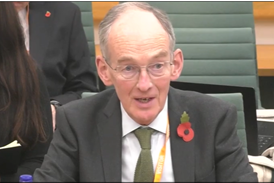Since the introduction of fundamental dishonesty (FD) as a defence against personal injury and clinical negligence claims under section 57 of the Criminal Justice and Courts Act 2015, the number of FD defence applications has risen rapidly.

It is particularly common among defendant insurers in road traffic collision cases. This is in part because FD offered a great deal more impact for certain defendants compared to the perceived status quo – that is, claimants losing the damages directly related to exaggerated or made-up injuries but recovering the rest.
Now, with FD, the potential for the claimant to lose everything and face committal proceedings leading to possible imprisonment can be placed front and centre in a case. The defence can be introduced pre-trial and at crucial stages. There is, frankly, no more powerful negotiation tool on the approach to a joint settlement meeting (JSM) than service of video surveillance purporting to undermine the claimant’s evidence of fact, accompanied by a section 57 allegation. Even where the evidence against a claimant is not up to the standard of ‘cogent’, as required by the act, it has been used as a highly effective sword of Damocles hanging over the claimant, regardless of whether they have been dishonest in any way.
More recently we have seen NHS trusts use the defence on a more regular basis. This is hardly surprising. With the NHS experiencing significant pressures caused by budgetary restraints and the impact of the pandemic, any claimant perceived to be trying to obtain vital NHS funds by deception should expect to face allegations of dishonesty and threatened with committal proceedings.
However, the recent case of Karen Preater v Betsi Cadwaladr University Health Board (unreported), demonstrates how NHS trusts must be judicious about when and how to pursue the ‘all out’ approach of a FD defence, otherwise it can significantly backfire.
Mrs Preater suffered injury during a vaginal mesh procedure in 2014. Judgment was entered in her favour. The defendant rebutted that the claimant had suffered a chronic pain condition as pleaded and in December 2020, ahead of a planned JSM in January 2021, served video surveillance and a ‘cyber report’ covering the claimant’s life on social media. It was alleged the claimant had lied about the extent to which she was able to work and needed care.
The claimant earned more than £40,000 a year as a professional in sales and marketing before the injury and afterwards was not able to return to paid ‘employment’. She did attempt various initiatives from her home, including beauty treatments to friends and contacts via social media. She failed to mention the activity to her solicitors at the time or any of the experts instructed in the damages case. Her evidence was that she never thought of the activity as ‘work’ compared to what she did previously, that she saw it as therapeutic, and that she had never made any profit from any of the enterprises when costs of equipment, product and training courses were taken into account. Moreover, in every special damages schedule she had submitted, she gave credit for future earnings of £6-8,000 (net) per annum.
The defendant argued that the video surveillance showed the claimant was far more able than she purported to be and her social media activity showed she had a ‘thriving’ and ‘successful’ beauty therapy business which she had dishonestly kept from everyone during the case. The claimant’s previous solicitors and ATE provider withdrew from the case, believing the defendant’s allegations had merit. The claimant approached at least seven solicitors’ firms before being referred to Russell-Cooke via AvMA and accepted as a client in November 2021.
The defendant from early 2021 onwards adopted an ‘all or nothing’ approach. It refused to engage in any negotiations at the JSM. It refused the claimant’s offer to mediate in February 2022. Even after closing submissions on the seventh day of trial, when given ample opportunity by the court, the defendant declined to offer anything substantive to the court on quantum to assist it in making the obligatory assessment of damages where fundamental dishonesty has been alleged.
This refusal to engage was accompanied by a failure to provide anything more than generic allegations of ‘lying in respect of every aspect of the case’. The allegations were vaguely particularised. The extracts from social media were selective, taken at face value only, and completely ignored an equal, if not more substantial, amount of material which supported the claimant’s evidence. Five out of six of the defendant’s expert witnesses were found to have been unbalanced (or worse) in consideration of the claimant’s evidence. The surveillance footage had no ‘silver bullets’ and was arguably favourable to the claimant’s case.
Overall, the defendant did not satisfy the requirement to present ‘cogent’ evidence of dishonesty to the court, let alone dishonesty which went to the core of the claim. While the legislation indicates the evidential burden on the defendant to sustain an FD allegation is on the balance of probabilities, it should be held firmly in mind that the existence of the word ‘cogent’ means the lower threshold is not the usual 51%, but something significantly higher. The defendant’s presentation of this defence appeared to get nowhere near it.
Ultimately, this case offers an important lesson to defendants: the FD allegation is a serious and powerful one. If you are going to ‘pull the trigger’, be sure you can satisfy the cogency test by examining the footage and any social media content with the input of balanced expert views. The claimant recovered more than £970,000 after taking into account additional sums payable for beating her own Part 36 offer as well as an indemnity costs order. It may be that using section 57 as a negotiation tool is a bad choice, particularly where your opponents believe in their client and are prepared to support them to trial.
Grant Incles is a partner at Russell-Cooke and represented Karen Preater































No comments yet